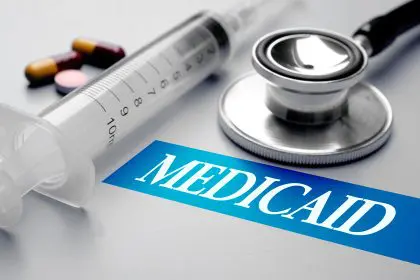New Orleans’ ambitious Community Health Improvement Plan addresses persistent disparities and creates pathways to wellness for all communities
New Orleans faces health challenges as unique and complex as the city itself. From neighborhoods still recovering from environmental disasters to communities battling generations of inequality, the path to wellness requires more than standard solutions. The city’s 2022-2025 Community Health Improvement Plan (CHIP) represents an ambitious roadmap designed to transform how health services reach every resident, particularly those historically left behind.
Developed through a collaboration between the New Orleans Health Department and over 40 community organizations, the plan leverages data-driven strategies while centering the voices of residents themselves. As the initiative enters a critical phase in 2025, its innovative approaches are already reshaping health outcomes across the Crescent City. Here’s how five core priorities are creating meaningful change for New Orleans residents.
1. Health services reach the most isolated neighborhoods
Access to quality healthcare remains frustratingly out of reach for many New Orleans residents, particularly in low-income areas where clinics are scarce and transportation barriers loom large. The CHIP tackles this fundamental challenge by literally bringing healthcare to people’s doorsteps.
In 2025, the city has expanded deployment of mobile health units that travel to underserved neighborhoods on regular schedules, offering primary care, vaccinations, and basic screenings without appointment requirements. These rolling clinics eliminate transportation hurdles that previously forced residents to choose between medical care and other necessities.
Fixed clinics have also transformed their approach, with federally qualified health centers extending evening and weekend hours to accommodate service workers and parents who cannot visit during traditional business hours. Community feedback revealed that many residents were delaying critical care simply because clinic schedules conflicted with work obligations.
The plan also prioritizes enrollment assistance for insurance programs, stationing navigators at libraries, churches, and community centers to help residents access Medicaid and other coverage options. By meeting people where they are, these initiatives have increased primary care visits by 17% in formerly underserved neighborhoods like New Orleans East.
“The difference is night and day from just a few years ago,” says a resident from the Lower Ninth Ward. “When my daughter needed her school physical, we walked three blocks to the mobile clinic instead of taking three buses across town.”
2. Mental health support responds to community trauma
New Orleans residents experience anxiety, depression, and substance use disorders at rates significantly above national averages, reflecting the ongoing impact of collective traumas from Hurricane Katrina to the pandemic. The CHIP addresses this crisis through an integrated approach that makes mental health care accessible in everyday settings.
The plan has expanded behavioral health screenings in primary care offices, ensuring that providers ask about mental wellbeing during routine visits and can make immediate referrals when needed. This integration helps catch problems earlier and reduces the stigma that previously prevented many residents from seeking help.
Crisis response teams now include mental health professionals who accompany first responders to emergency calls, providing on-the-spot assessment and de-escalation rather than automatic hospitalization or arrest. This approach has reduced unnecessary emergency room visits while connecting people to appropriate services.
In schools across the city, the CHIP has supported the placement of counselors trained in trauma-informed care, helping children process stress and develop healthy coping skills. Peer support networks, led by residents with lived experience of mental health challenges, provide culturally relevant assistance in neighborhoods where clinical services remain limited.
While provider shortages still create waiting lists for specialized care, telehealth options have expanded dramatically, allowing residents to connect with therapists remotely and receive support between in-person appointments.
3. Health information reaches everyone, regardless of language or literacy
Many New Orleans residents struggle to navigate the complex healthcare system or understand health information presented in technical language. The CHIP makes health literacy a centerpiece of its strategy, ensuring that vital information reaches everyone, regardless of education level or cultural background.
Community health workers – often recruited from the neighborhoods they serve – now act as bridges between formal healthcare systems and residents, explaining medical concepts in plain language and helping people understand their treatment options. These trusted messengers have proven particularly effective in communities with historical distrust of medical institutions.
The plan has rolled out multilingual educational campaigns that reflect New Orleans’ diverse population, with materials and outreach conducted in Spanish, Vietnamese, and other languages spoken throughout the city. Digital billboards, radio spots, and social media content share consistent health messages across platforms.
Monthly health fairs rotate through different neighborhoods, offering information alongside free screenings and enrollment assistance. These events, hosted at familiar community spaces like churches and recreation centers, make health resources accessible in non-clinical settings where residents feel comfortable.
The city has also partnered with barber shops, beauty salons, and other gathering places to share information about preventive care and available services, recognizing that informal networks often provide the most trusted channels for health communication.
4. Fresh food and safe recreation transform health landscapes
Food deserts and limited exercise options contribute significantly to New Orleans’ high rates of obesity, diabetes, and heart disease. The CHIP addresses these environmental factors through initiatives that transform neighborhoods into healthier places to live.
Community gardens now flourish on formerly vacant lots across the city, with 47 garden sites producing fresh vegetables for surrounding neighborhoods. These green spaces not only provide nutritious food but also serve as educational hubs where residents learn about growing and preparing healthy meals.
The plan has supported the expansion of farmers’ markets that accept SNAP benefits and offer matching dollars for produce purchases, effectively doubling the purchasing power of low-income families. Mobile markets bring fresh food directly to senior centers and public housing communities.
Corner stores in food deserts have received grants to upgrade refrigeration equipment and stock fresh produce, transforming quick-stop shops into legitimate sources of nutritious options. The city has also offered tax incentives to attract full-service grocers to underserved areas, though this aspect of the plan has seen slower progress.
For physical activity, the CHIP has focused on making recreation safe and accessible. Parks in high-poverty areas have received lighting upgrades and regular maintenance to address safety concerns, while community centers offer free exercise classes for all ages and fitness levels. Walking groups provide both activity and social connection for seniors and others seeking group support for fitness goals.
5. Root causes of health disparities face direct challenges
Perhaps most ambitiously, the CHIP acknowledges that health disparities reflect deeper social and economic inequities. Rather than treating symptoms alone, the plan tackles root causes through partnerships that extend well beyond traditional healthcare.
The New Orleans Health Department now works closely with housing authorities to address mold, lead paint, and other environmental hazards that trigger asthma and other chronic conditions. Health inspectors and housing representatives conduct joint visits to ensure that rental properties meet basic health standards.
Workforce development programs connect residents from high-poverty areas with training for healthcare careers, simultaneously addressing unemployment and provider shortages. Community health worker certification programs create career pathways for natural helpers already serving their neighborhoods.
The plan supports legal aid services that help families navigate eviction proceedings, benefit applications, and other bureaucratic challenges that directly impact health. These partnerships recognize that housing stability and economic security form the foundation for well-being.
Data collection has become more sophisticated, with health metrics now analyzed by race, income, and neighborhood to identify disparities and target resources accordingly. This approach ensures that improvements reach those most affected by historical inequities rather than simply improving citywide averages.
Community advisory boards, comprising residents from affected neighborhoods, review all major health initiatives before implementation, ensuring that interventions align with actual community needs and preferences.
The path forward: challenges and opportunities
Despite meaningful progress, the CHIP faces significant challenges as it enters 2025. The expiration of pandemic-era funding has created budget constraints just as programs were gaining momentum. Healthcare workforce shortages remain acute, particularly for specialists and behavioral health providers.
Environmental vulnerabilities persist, with climate change increasing the frequency of extreme weather events that disrupt services and create new health hazards. The city’s infrastructure limitations – from unreliable public transportation to aging water systems – complicate efforts to create consistently healthy environments.
Yet the plan’s collaborative approach provides critical resilience. By distributing responsibility across multiple organizations and sectors, the CHIP ensures that progress continues even when individual partners face resource constraints.
The emphasis on measurement and accountability also helps maintain focus despite challenges. Regular community surveys track both health outcomes and resident satisfaction, allowing for mid-course corrections when strategies prove less effective than anticipated.
Most importantly, the plan’s deep engagement with community members creates sustainability beyond any funding cycle. By building local capacity and leadership, the CHIP is cultivating a generation of health advocates within neighborhoods previously defined by disparities.
As New Orleans continues its journey toward health equity, the 2022-2025 CHIP offers both a roadmap and a reflection of the city’s character – resilient, creative, and deeply committed to collective wellbeing. The plan recognizes that health emerges not just from medical care but from the community conditions that either nurture or undermine wellness.
For residents across the Crescent City, these five priorities represent more than abstract public health goals. They offer tangible improvements in daily life: the diabetes screening at a neighborhood church, the fresh vegetables grown on a formerly abandoned lot, the mental health counselor available during a moment of crisis.
Through these practical interventions and systemic changes, New Orleans is writing a new chapter in its ongoing story of recovery and reinvention – one where good health becomes accessible to everyone, regardless of zip code, income, or background.














